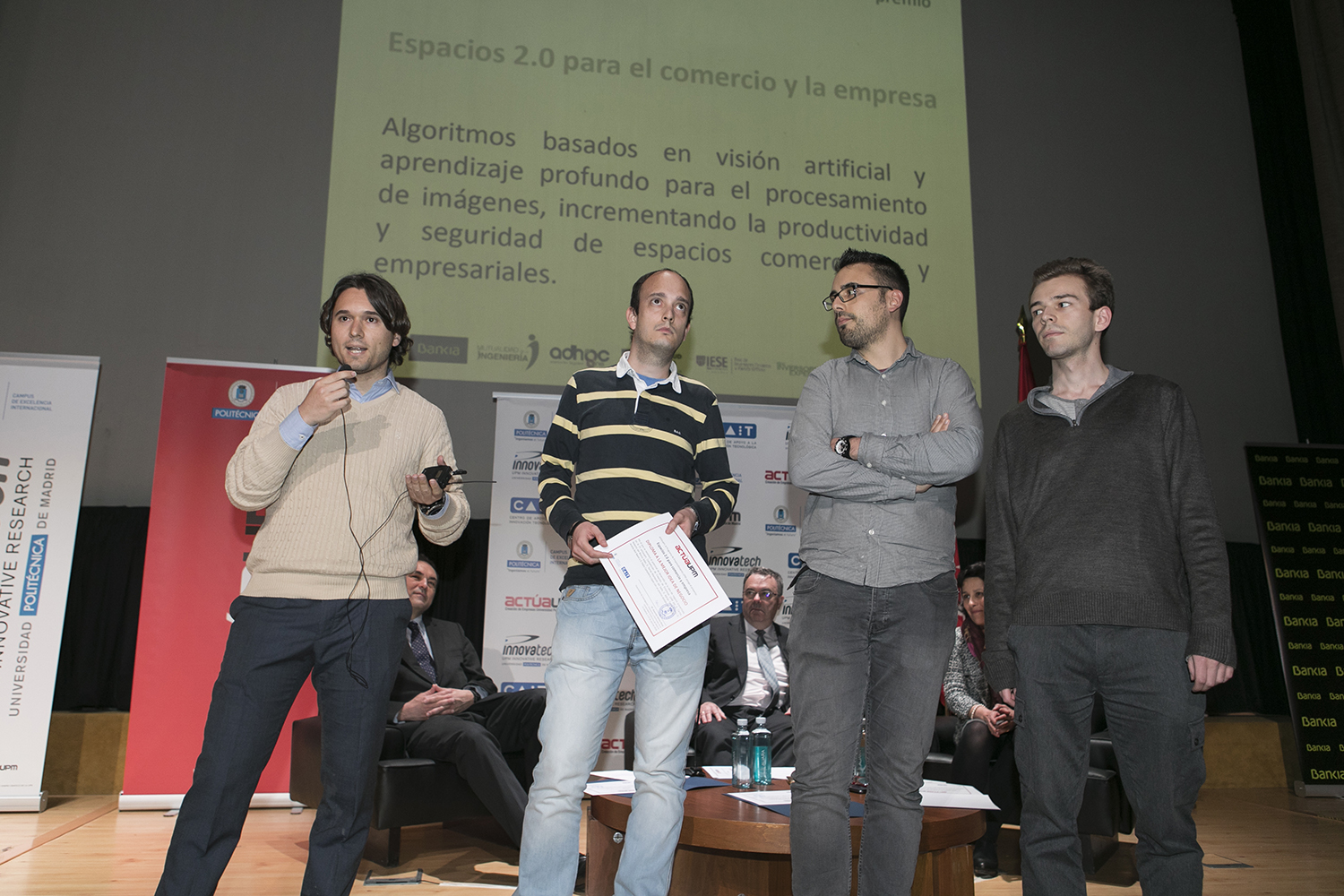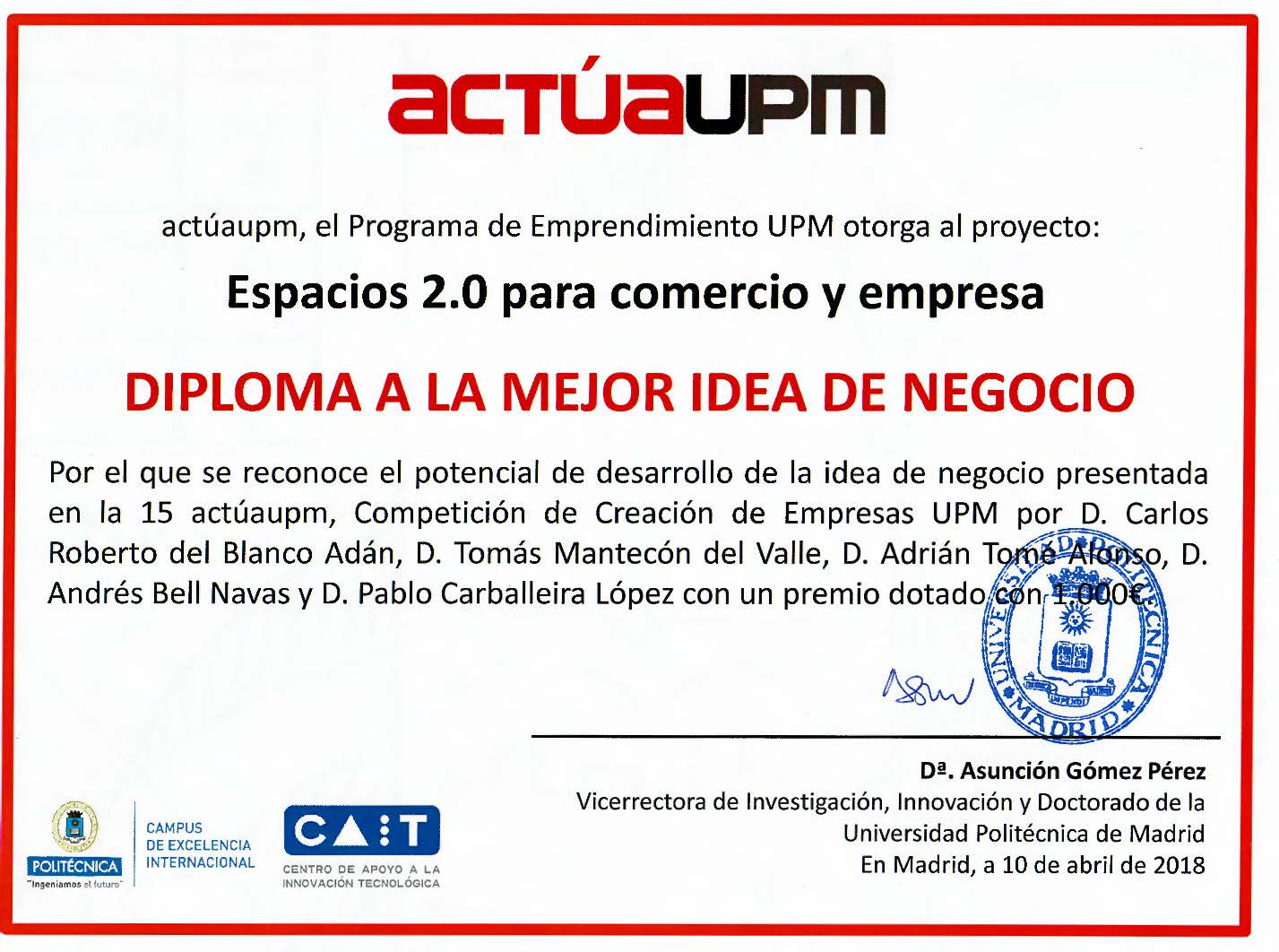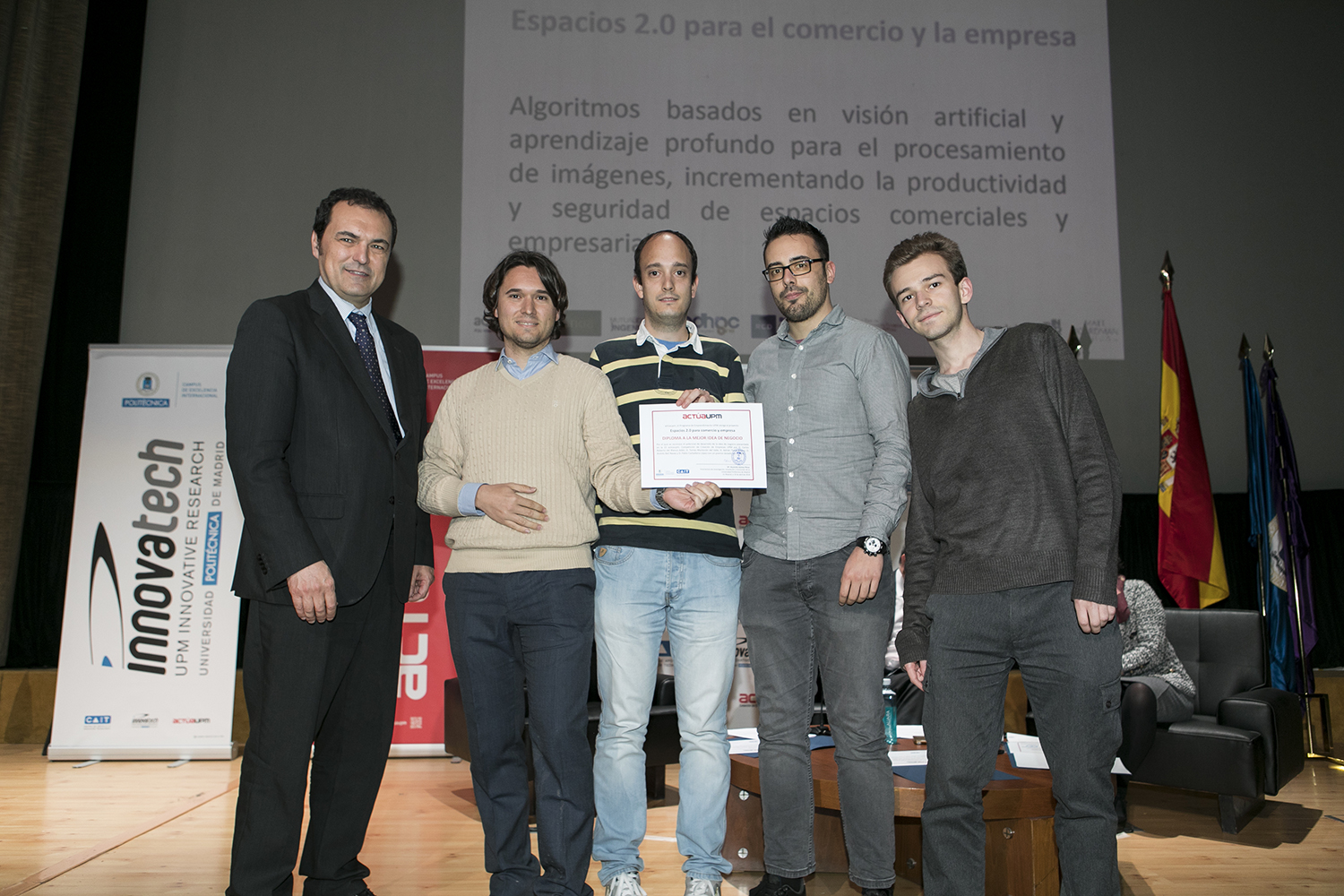Inicio » Sin categoría
Archivos de la categoría: Sin categoría
Visual fish detection and tracking system
Code and database derived from the Idoia Moreno’s master thesis.
New publication “A Novel System for Nighttime Vehicle Detection Based on …”
We are pleased to announce our new publication “A Novel System for Nighttime Vehicle Detection Based on Foveal Classifiers with Real-Time Performance” in IEEE Trans. Intelligent Transportation Systems.
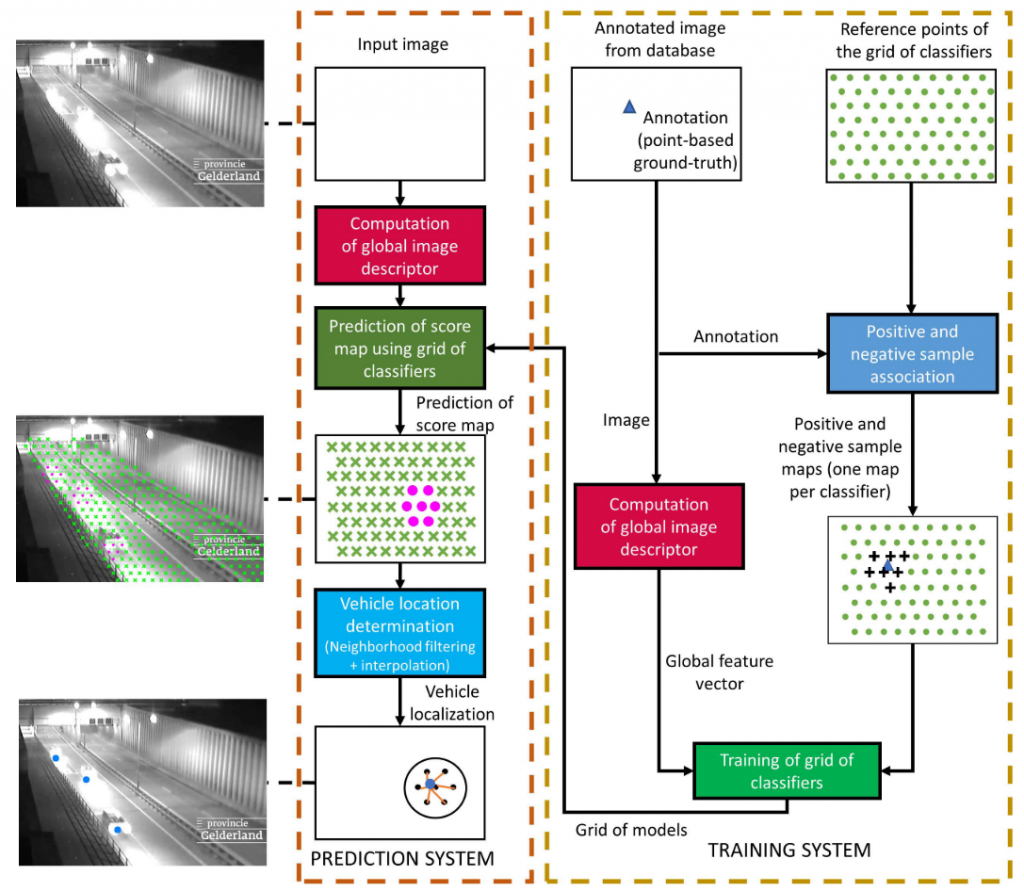
See vídeos in [Link].
Check the database in [Link].
Multi-UAV online mission planning
An online mission planning system based on deep reinforcement learning and graph neural networks has been developed, which is capable of managing the routes of a fleet of UAVs in real time and in an optimal way to achieve visiting as many locations as possible with a region-sharing strategy. The cooperation strategy is specially designed for non-communications environments among the UAVs (or radio silence) during the mission execution. [More info]
New publication “Robust people indoor localization with omnidirectional…”
Our paper Robust people indoor localization with omnidirectional cameras using a Grid of Spatial-Aware Classifiers has been accepted in Signal Processing: Image Communication.
See also our database PIROPO.
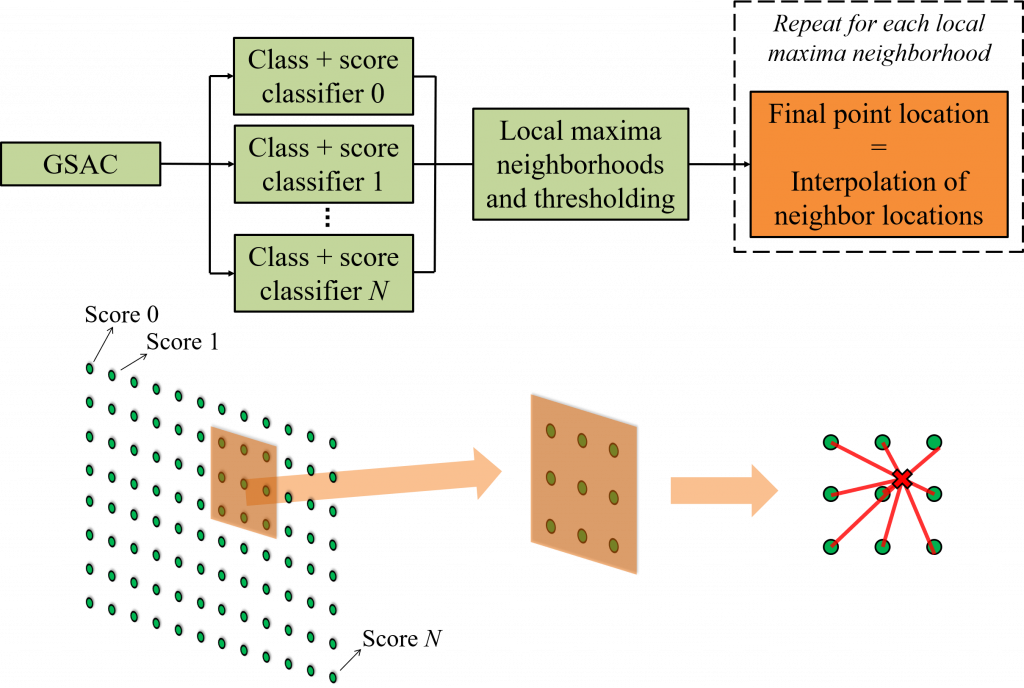
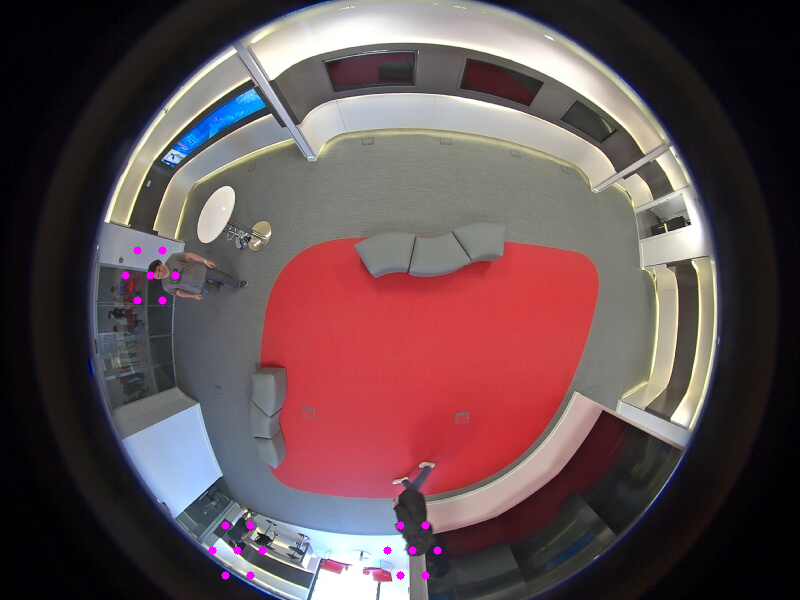
New database for parking lot occupancy
See [here] our new published database for estimating parking lot occupancy using color cameras in a complex environment (day and night, perspective occlusions, background occlusions, etc.). Using this database, we have trained our system ParkingNet. See the vídeo demo:

New publication: Robust Nighttime Vehicle Detection Based on Foveal Classifiers
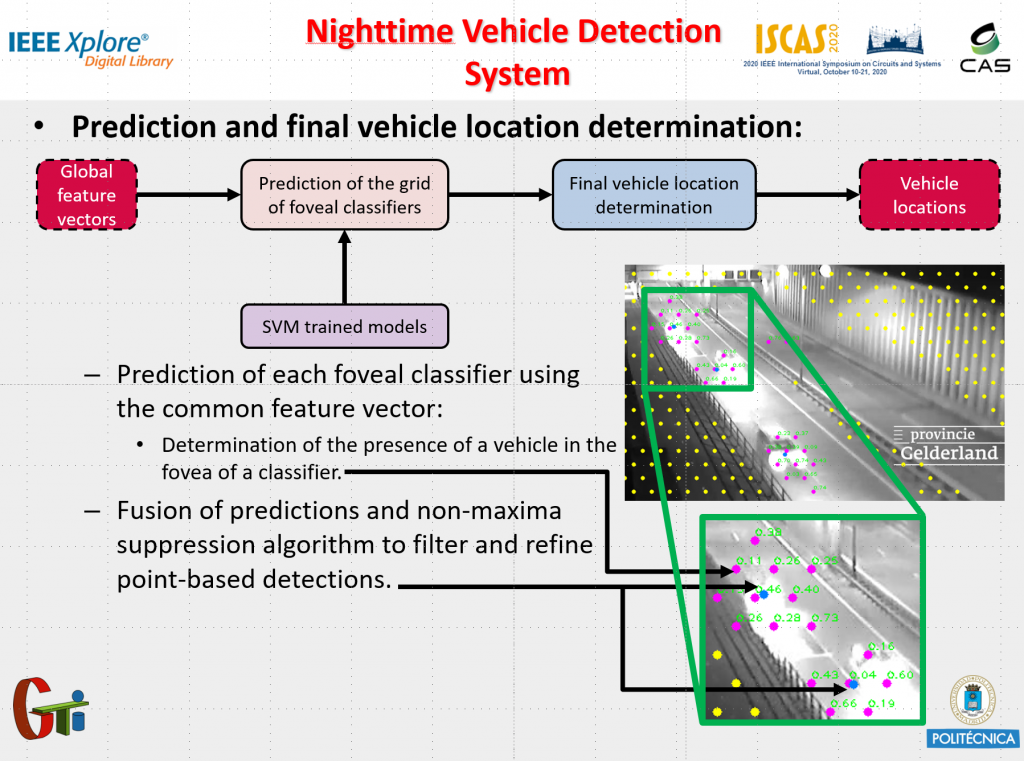
We have just published a new article called: “Robust Nighttime Vehicle Detection Based on Foveal Classifiers”. You can find it in [Link], where you can download the paper and watch a video about it. See our presentation below.
Abstract:Visual vehicle surveillance has become an important research field due to its wide range of traffic applications. This task becomes more relevant in nighttime because accidents considerably increase. Typically, this problem is addressed by segmenting the bright image regions produced by vehicle lights, assuming they are well defined. But, often there are only flashes that occupy large image regions, invalidating the previous strategy. Thus, a real-time vehicle detection algorithm for nighttime that addresses the previous challenge is presented. First, the whole image is characterized by only one descriptor. Then, a grid of foveal classifiers that share the same previous image descriptor (unlike the traditional sliding window scheme) estimates the vehicle positions. Every classifier is trained to detect vehicles in specific image regions by analyzing the complex light patterns in the night. Furthermore, a new nighttime database has been also created to assess the effectiveness of the proposed method.
Video demos
Image annotation tool for machine learning
VGG Image Annotator (VIA) is an image annotation tool that can be used to define regions in an image and create textual descriptions of those regions. VIA is an open source project developed at the Visual Geometry Group and released under the BSD-2 clause license.
Here is a list of some salient features of VIA:
- based solely on HTML, CSS and Javascript (no external javascript libraries)
- can be used off-line (full application in a single html file of size < 400KB)
- requires nothing more than a modern web browser (tested on Firefox, Chrome and Safari)
- supported region shapes: rectangle, circle, ellipse, polygon, point and polyline
- import/export of region data in csv and json file format
- supports bulk update of annotations in image grid view
- quick update of annotations using on-image annotation editor
- keyboard shortcuts to speed up annotation
[More]
[Spanish] Ganadores a la mejor idea de negocio de actúaupm
Estamos orgullosos de ser uno de los 10 ganadores de la competición de emprendimiento y empresas Actúaupm. Nuestra idea ganadora se llama:
Espacios 2.0 para el comercio y la empresa: algoritmos basados en visión artificial y aprendizaje profundo para el procesamiento de imágenes, incrementando la productividad y seguridad de espacios comerciales y empresariales.
Más información en: http://actuaupm.blogspot.com.es/2018/04/premios-y-diplomas-las-mejores-ideas-de.html
Visit our website: Machine learning at GTI-UPM
Machine Learning at GTI-UPM: www.mlatgti.es
This website is focused on our advances in the field of Machine Learning and Deep Learning. For other research areas, please check: http://gti.ssr.upm.es.
Renovación licencia de Matlab UPM
El mensaje que aparece en Matlab de expiración de licencia (Figura 0) se produce porque la UPM renueva la licencia de Matlab año por año, y cuando se acerca la fecha de expiración, Matlab lo recuerda. La UPM a día de hoy sigue renovando Matlab, por lo que dicho mensaje de expiración no debe asustarnos. Probablemente, este proceder es un mecanismo para cerrar el derecho de uso de Matlab a antiguos alumnos o trabajadores que ya no tengan vinculación con la UPM. Es importante mencionar que para renovar la licencia de Matlab, hay que esperar a que expire el periodo por completo. Si realizamos los métodos que se proponen a continuación con antelación, simplemente no funcionarán (seguirá apareciendo el mensaje de expiración). Se propone tres métodos para activar la licencia de Matlab: inmediato, rápido y lento.
Método inmediato
El método inmediato consiste en ejecutar el programa Activate Matlab R20XXz (R20XXz debe sustituirse por la versión concreta del matlab instalado), el cual nos guiará en el proceso de activación (o re-activación de Matlab). Pasos concretos:
- Abrir Activate Matlab R20XXz pulsando la tecla de Windows (típicamente la tecla con el icono de una ventana). En vez de pulsar la tecla de Windows, puede hacer click en el botón Inicio.
- Escribir los primeros caracteres del nombre programa (tal y como aparece en la Figura 1).
- Click sobre el nombre/icono del programa.
- Aparece la primera de una serie de ventanas que nos ayudarán a activar Matlab de nuevo. En la primera ventana, seleccionar la opción marcada en la Figura 2 y hacer click en Next.
- En la siguiente ventana, seleccionar la opción marcada en la Figura 3, introducir tu email de la upm en Email Address (que coincide con la cuenta de usuario Matlab) y tu contraseña de la cuenta de usuario Matlab en Password. Recuerda que la cuenta de Matlab es la que tuviste que crear para poder acceder al software de Matlab desde su página oficial. Finalmente, hacer click en Next.
Figura 3
- En la siguiente ventana, seleccione la licencia de la UPM. Si es personal docente o investigador, seleccione la licencia etiquetada con el nombre de Campus (Figura 4). Si es estudiante, seleccione la licencia etiquetada con el nombre de Student(Figura 5). Finalmente, hacer click en Next.
Figura 5
- En la siguiente ventana (Figura 6), hacer click en Confirm.
- Finalmente, en la siguiente ventana (Figura 7), hacer click en Finish.
Método rápido
El método rápido consiste en activar Matlab desde dentro de la propia aplicación de Matlab. Pasos concretos:
- Abrir Matlab.
- En la interfaz de Matlab (Figura 8), hacer click en Help, hacer click en Licensing y finalmente hacer click en Activate Software.
Figura 8
- Seguir los pasos 4 a 8 del Método inmediato.
Método lento
El método lento consiste en desinstalar Matlab e instalarlo de nuevo. Al principio y al final del proceso de instalación aparecerán unos pasos similares a los métodos anteriores para activar Matlab.
